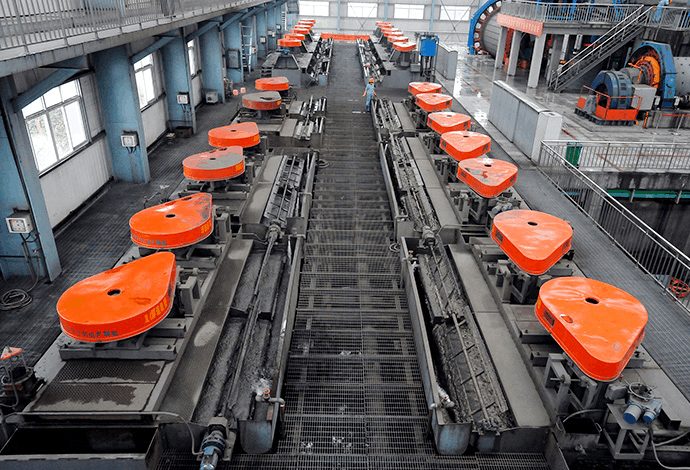Three Methods To Antimony Ore Beneficiation And Processing

Flotation is the most important extraction method for antimony deposits. Antimony sulfide deposits are easy-to-float deposits, and flotation methods are mostly used to improve the crystal position of the ore. In the meantime, stibnite often uses lead salts as activators first, and also uses copper salts or both lead salts and copper salts, and then uses collectors for flotation. Commonly used collectors are butyl xanthate or a mixture of shale oil and ethyl thiazide, and the foaming agent is pine oil or No. 2 oil. Antimony oxide ore is classified as refractory ore. Flotation is the main beneficiation method for obtaining powdered antimony concentrate, and flotation is included in almost all beneficiation processes. The types of ores used for processing are: mono-antimony sulfide ore, sulfide-oxidized mixed antimony ore, tungsten antimony gold polymetallic sulfide ore, antimony arsenic gold sulfide ore, tin, lead, antimony, zinc polymetallic sulfide ore, antimony, lead , zinc, mercury polymetallic sulfide ore and arsenic, antimony, gold polymetallic sulfide ore, etc., now take the single sulfide ore of Mine and the beneficiation of tin, zinc, lead, antimony polymetallic ore as examples to illustrate the single Flotation process for antimony sulfide ores and complex antimony sulfide ores.
For complex polymetallic minerals containing antimony, multiple heavy non-ferrous metal sulfides are often associated: arsenic-containing sulfide minerals such as arsenopyrite FeAsS, realgar AsS, orpiment As2S3; lead-containing sulfide minerals such as galena; zinc-containing sulfide minerals such as sphalerite ; Cinnabar and other mercury-containing sulfide minerals and so on. Sometimes there are also oxide minerals with great economic value, such as cassiterite, scheelite, etc.; there are also precious metal minerals such as natural gold. Therefore, it is necessary to consider the comprehensive recovery of filtration during beneficiation.

